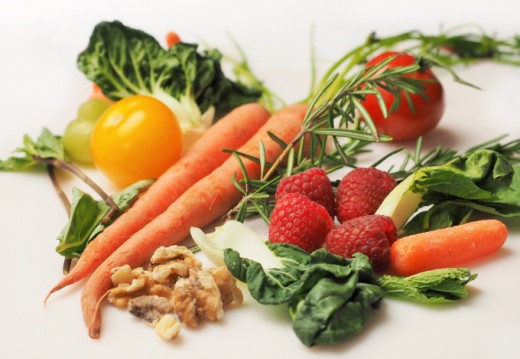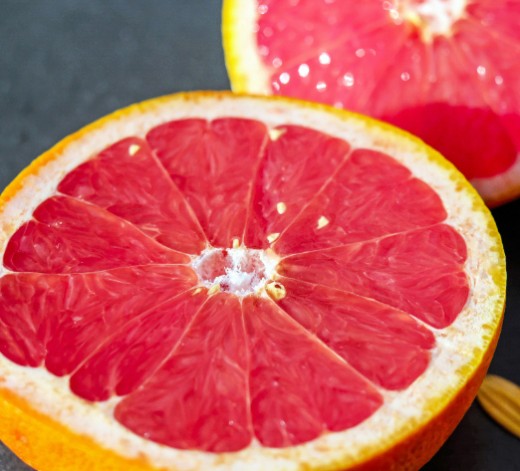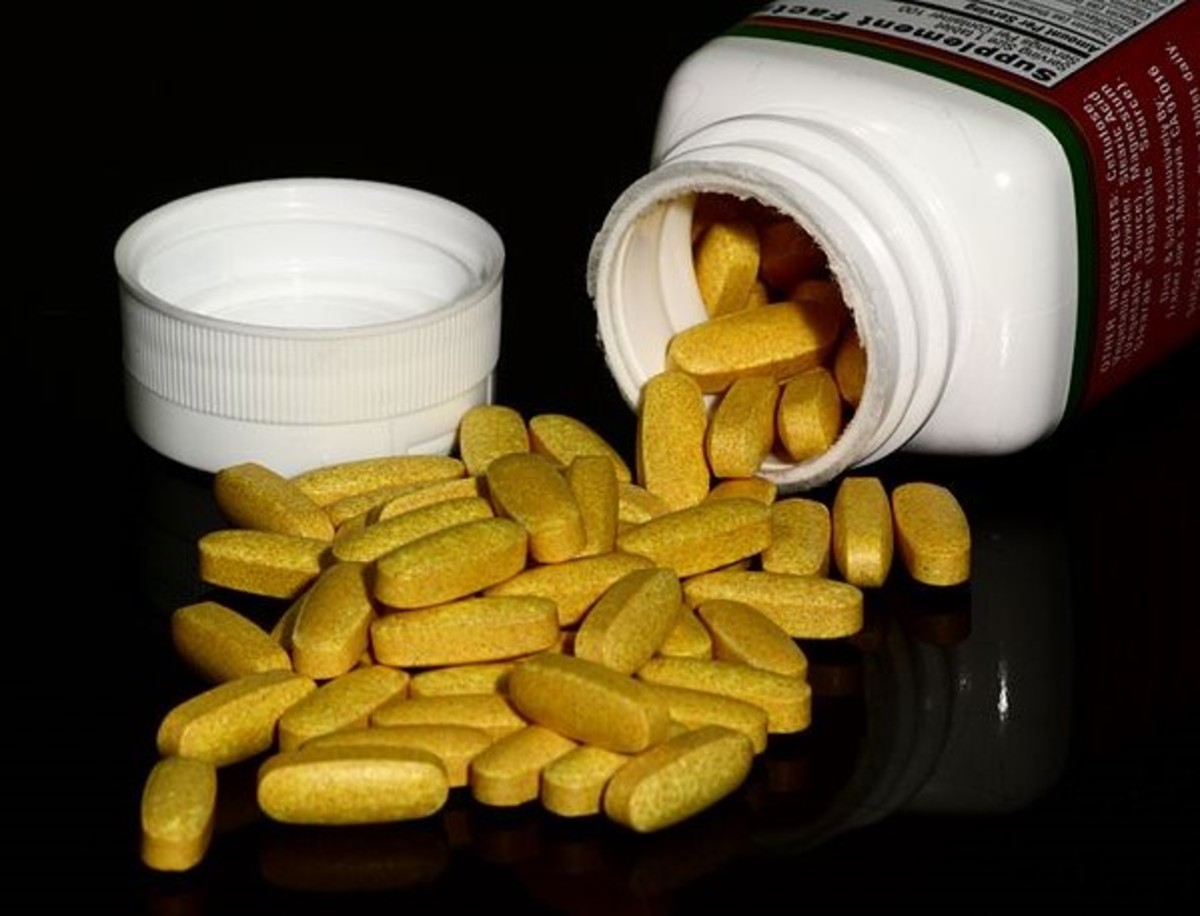The Four Fat Vitamins, Nine Water Vitamins
Vitamin
Not only are nutrition's essential to the growth process, it's a maintenance tool for the body. Vitamins are organic compounds required for an organism in restricted amounts. Knowing the difference between fat and water soluble vitamins will help in giving the body the best care. Fruits and vegetables contains at least two to three multiple vitamins in one whole serving. Overconsumption and underconsumption may lead to unstable nutrients resulting in a deficiency. Defects commonly occur in cases of alcoholism, drugs, malnutrition, poverty, and severe weight loss diet practices.
Replenish Water-Soluble Vitamin
The first group of vitamins is water-soluble vitamins. This group of nutrients need to be replenished every day. Made of B-Complex and Vitamin C finding the food source will be simple. These vitamins are released through the sweat glands and the urine system. B Vitamins are dietary supplements. Converting food into fuel for energy. Experiencing any deficiency, it is best to consult your doctor. The eight B-Complex vitamins will be listed in a chart at the end with a full description of the food source and deficiency symptoms.
Thiamine performs three important tasks for food to process through the body.
- Helping in the aerobic respiration process, obtaining energy from food
- Regulate adequate energy intake for metabolism
- Assist with digestive problems
Carbohydrate requires Thiamine to function properly. Essentially performing many boosting tasks such as increasing energy, enhancement of learning ability, and sustaining a positive mindset. Thiamine is considering a transportation vehicle. Guiding vitamins to their proper destination.
Riboflavin is a vitamin used to stop B2 vitamin deficiency and migraine headaches.
- Vision promotion
- Healthy skin
- Releases energy from foods
- Heat-stable
Cellular respiration requires Riboflavin, functioning as an active form of the coenzyme. The right amount of B2 vitamin will properly develop the skin and lining of red blood cells and digestive tract. Energy level increase and athletic and immune system boost are all signs of proper Riboflavin amounts.
Niacin is an organic compound consisting of carbon, hydrogen, nitrogen, and oxygen and is essential to the human health.
- Promotes digestion
- Healthy skin
- Nerves
- Normal appetite
- Enzyme function
One of the essential health nutrients reduces heart attack risk and arteries narrowing. The B3 vitamin is used as a medication to treats high cholesterol and high nicotinic acid levels. Using niacin for self-treatment medical uses can cause the body's liver to fail due to high doses. A drug treatment and medication in one is not uncommon to find in many of the major vitamins for the body. Knowing which nutrient is used as a drug and the damages it may have when using in large doses, is why treating yourself is better for the doctors. The very benefits that niacin promotes it can also damage.
Pantothenic acid two main functions are:
- Energy production of hormones formation
- Metabolism of carbohydrates, fats, and proteins
Unknown to science researchers if Pantothenic acid is effective for treating the lengthy list of health concerns. Most common treatment offered by this vitamin is treating acne, alcoholism, anxiety, asthma, dandruff, stress, and yeast infection. Important for proper use in carbohydrate, healthy skin, lipids, and proteins. Pantothenic acid or B5 vitamin is commonly located in animals and plants. Both animals and plants can synthesize coenzyme and perform other various functions when Pantothenic acid is positioned.
Pyridoxine boosts the immune system. Preventing low levels of B6 vitamins and helping stop bladder and eye infection.
- Hemoglobin and insulin chemical production
For fats, proteins, or sugar to function properly pyridoxine must be in place. Functioning as a tool for proper brain development and nutrients function is not its only role for the body. For those days when a woman menstrual is undeniably painful, it will lessen the pain.
Biotin is dosage is served in small amounts of food.
- Contributes to fat, food carbohydrates, and protein metabolism
- Releases energy from carbohydrate
Supporting cell health, digestive tract, metabolism, nerves, and skin health. Its coenzymes break down carbohydrate and fats for energy. For this being a vitamin that is constantly being flushed out the system it is given in supplement form. An average woman would be fine without consuming biotin without any major defects rather than a pregnant woman. It is unclear what this will do to a pregnant woman, however, it is known to be nontoxic.
A folic acid is a synthetic form of B9 vitamin required for proper human body development.
- Aids protein metabolism
- Controls homocysteine level
- Red blood cells formation
Treats certain cases of anemia. Defects are usually caused by alcoholism, celiac disease, and inflammatory bowel disease. While important to emotional and mental health, folic acid or folate works alongside B12 vitamin. Experiencing high levels of folate is not common or deadly.
Cobalamin is the key to normal brain and nervous system function and the formation of red blood cells.
- Maintain healthy nerve cells
- Forms protective covering of nerves
Low Cobalamin levels mean the body will experience a decrease in energy level. High or normal levels of Cobalamin results in regular digestion, energy level, hair, heart, memory, mood, and skin. Addressing adrenal fatigue, DNA synthesis, enzyme production, and hormonal balance.
Vitamin C is an ascorbic acid often used as a dietary supplement.
- Utilizes iron
- Strengthens blood vessels walls
Critical to the body performance through the many tasks it can accomplish throughout the body system. The acid absorbed from Vitamin C foods can hold cells together through collagen synthesis, maintaining the immune functions.

Water-Soluble Vitamins Chart
Vitamin Type:
| Defect Symptoms:
| Source of Food:
|
|---|---|---|
B1
| Irritability, Malaise, Mental confusion, Muscle weakness, Weight loss
| Beans, Fortified grains, Liver, Peas, Pork, Seeds (edible), Spinach, Whole grains, Yeast
|
B2
| Cracks in mouth corner, Light sensitivity, Oily scaly skin, Sore throat
| Eggs, Dark green vegetables, Milk
|
B3
| Cramps, Mental confusion, Nausea, Skin disorder
| Fish, Meats, Peanuts, Poultry
|
B5
| Uncommon
| Egg yolk, Kidney beans
|
B6
| Anemia, Kidney stones, Skin disorder
| Cereal, Green leafy vegetables, Meat, Pork
|
B7
| Depression, Fatigue, Heart abnormalities
| Egg yolk, Yeast dough
|
B9
| Appetite loss, Forgetfulness, Gingivitis, Impaired growth, Irritability, Mental sluggish, Tongue soreness
| Beef liver, Broccoli, Lettuce, Melon, Mushroom, Okra, Tomato juice
|
B12
| Fatigue, Neurological disorder, Numbness, Tingling
| Cheese, Fish, Meat, Milk
|
Vitamin B-complex : B1 (Thiamin or Thiamine), B2 (Riboflavin), B3 (Niacin), B5 ( Pantothenic acid), B6 (Pyridoxine), B7 (Biotin), B9 (Folic acid or Folate), B12 (Cobalamin), and Vitamin C deficiency and food source.
Nonperishable Nutrient
Fat-soluble vitamins are stored in the fatty tissue and liver. High in fat foods, over indulging may lead to larger abdomens. For the body to benefit it is better to absorb when eating with a fat, such as a steak. Fat-soluble vitamins are high in fats, usually dissolving before reaching the bloodstream.
Retinol helps with the intake of light changes, gene expression, immune system regulation. Certain parts of the body require a moist layer of Vitamin A to function properly.
- Eye adjustment maintenance
Unsaturated fat-soluble vitamin providing growth and development. Mostly functioning for the retina health. Retina combines with opsin to form rhodopsin for good eyesight vision. Rhodopsin controls the light intake and absorbs color. The body lacking in Retinol may lead to color blindness.
Vitamin D cell growth population enables mineralization while providing adequate serum calcium.
- Aids calcium absorption
- Immune and Neuromuscular function
- Reduce inflammation
The most significant process of Vitamin D is assisted by Boron, Magnesium, and Vitamin C, E, and K in the calcium absorption process. Serum Calcium depends on the rapid change. Affecting symptom developments for hypocalcemia and hypercalcemia levels.
Tocopherol is a fat-soluble antioxidant used to disable the production of damaging free radical tissue.
- Common in North America diet plans
This organic compound protects cells from damaging artery walls, retinol, and any Vitamin C production. Deriving from vegetable oils, it absorbs and prevents ultraviolet rays from damaging the skin. Adding into a cosmetic product (lotion) for a preservation it helps oil in the product from going a-wall.
Vitamin K is used to help complete blood coagulation.
- Complete synthesis for blood clotting
Control binding of Calcium for bones and tissue
Blood coagulation is the formation of blood clots.
Blood clots are beneficial and dangerous to the human life. It some cases blood clots is placed to prevent cancer from spreading. In many other cases, a blood clot has stopped life after reaching the heart. Making it difficult for the heart to pump any blood throughout the body. Warfarin is used to slow down the clotting, if the body has too much Vitamin K it decreases the warfarin ultimately leading to dead.

Fat-Soluble Vitamins Chart
Vitamin Type:
| Source of Food:
| Deficiency:
|
|---|---|---|
Vitamin A
| Apricots, Carrot (carrot juice), Cheese, Fish, Liver, Squash, Sweet Potatoes
| Dry skin, Infection resistant lowers, Night blindness, Tooth development
|
Vitamin D
| Cod liver oil, Fish (oily), Milk, Sunlight
| Children: Flat skull back, Rickets Adults: Bone mass loss, Muscle weakness
|
Vitamin E
| Cereal, Corn oil, Dressing, Fruit, Grains, Germ oil, Margarine, Nuts, Safflower oil, Sunflower, Vegetable(vegetable oil)
| Premature babies are born, Unable to absorb fat
|
Vitamin K
| Canola oil, Green leafy vegetables, Soybean oil
| Bone weakness, Hemorrhage, Soft tissue
|
Vitamin A (Retinol), Vitamin D, Vitamin E (Tocopherol), and Vitamin K food source and defects chart.
Have you suffered from a vitamin deficiency?
© 2017 Opal








